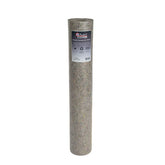Introduction
A waterproof tarpaulin is a versatile and essential tool to protect your valuables from harsh weather conditions. Whether you use it as container cover, custom-made boat cover Whether it's general protection or general protection, proper care and maintenance are crucial to extending its lifespan. Neglecting maintenance can lead to damage and reduced water resistance, making the tarpaulin less effective over time. Fortunately, with a few practical tips, you can keep your tarpaulin in excellent condition for years to come.
This guide shares comprehensive tips on choosing the right waterproof tarpaulin, proper storage methods, cleaning and maintenance routines, and how to inspect and repair damage. By following these suggestions, you can ensure the durability and effectiveness of your investment. waterproof tarpaulin maximize.
Choosing the right waterproof tarpaulin
Selecting the right tarpaulin is the first step to ensuring long-term use. Essential factors are discussed below:
Material quality: The first requirement is that the tarpaulin must be made of superior quality, UV-resistant, and tear-resistant material. This way, it will withstand harsh weather conditions without eroding quickly. The best option would be to choose Perfect Cover® Tarpaulin by
Purpose-specific design: Make sure the sail is specifically designed for the application. For example, if you have a custom-made boat cover If you want it, it should have reinforced rings and be tight enough to ensure that water, dirt, or debris does not disturb it.
Size and coverage: Use a full-coverage tarp on the intended object. The tarp should overlap the edges to prevent water from leaking in. When applying a tarp to containers, it should be tightly covered without any gaps.
Secure mounting: A tarp with strong rings and reinforced edges will secure it securely to the attachment points. Accessories such as elastic bungee cords like the
Waterproof coating: The tarpaulin must have a high-quality waterproof coating so that you can be sure it is protected against rain and moisture.
Proper storage for a long lifespan
It's very important to store your tarpaulin properly when not in use, as this ensures its continued effectiveness. Here are detailed tips for proper tarpaulin storage:
Cleaning for storage: Always clean your sail thoroughly before storing it to remove all dirt, dust and moisture that promotes mold growth.
Dry completely: The tarp must dry completely before folding and storing it. A little moisture can be mild and damage the material over time.
Fold neatly: Fold the sail neatly along the seams to avoid creases and stress points.
Store in a cool, dry place: Store the tarpaulin away from direct sunlight and extreme temperatures. UV rays and heat can weaken the material.
Use protective covers: Store the sail in a protective bag or cover to protect it from dust and accidental damage.
Regular cleaning and maintenance
It is essential to have your waterproof tarpaulin Keep it clean and well-maintained to maintain its functionality. Here's how to properly maintain it:
Mild cleaning solution: Use a mild detergent mixed with water to clean the surface. Avoid harsh chemicals, as these can damage the waterproof coating.
Soft cleaning tools: Use a soft brush or sponge to scrub away dirt and debris. Avoid abrasive tools that could scratch or damage the sail.
Rinse thoroughly: rinse away all soap residue with clean water.
Dry completely: After cleaning, spread the tarpaulin out in a shady, well-ventilated area to dry completely before storing or reusing it.
Maintain the waterproof coating: The waterproof coating can wear off over time. Apply a waterproofing spray to maintain its water-resistant properties.
Avoid machine washing: Never put your tarpaulin in a washing machine, as the movement will damage the fabric and the waterproof layer.
Check for damage and repair quickly
Regular inspections and prompt repairs are essential to keep your tarpaulin in top condition. Here's what to look out for and how to fix problems:
Check for cracks and holes: Check the surface for signs of cracks, holes, or frayed edges.
Check rings and seams: The rings must be intact and the seams must be properly sealed.
Repair minor damage: Use canvas repair tape to seal small tears and holes.
Strengthen weak spots: Apply additional waterproof tape to weak areas that show signs of wear.
Replace damaged parts: Replace any damaged rings or other fasteners to ensure a tight fit.
Use safe fasteners: consider high-quality bungee cords such as the
Find professional repairs: In case of extensive damage, consult a professional repair service to restore the functionality of the tarpaulin.
Avoid overtightening to prevent damage
While pinning your waterproof tarpaulin essential, over-tightening can lead to premature wear and damage.
Stay flexible: allow some flexibility when closing the tarpaulin for wind and weather conditions.
Use elastic closures: Try using elastic bungee cords instead of stiff closures to minimize tension on the grommets and the canvas fabric.
Avoid stiff bends: Do not stretch the tarpaulin over sharp edges as it will tear easily.
Check the closures: Always check and adjust the closures to ensure they are tight enough, but not too tight.
Conclusion
Proper maintenance and care are essential to prolong the life of your waterproof tarpaulin By choosing the right tarpaulin for your needs, storing it, keeping it clean, inspecting it for damage, and avoiding overtightening, you can ensure that your waterproof tarpaulin provides long-lasting service and reliable protection for your purposes. Whether you use it as Container lidWhether you need a custom boat cover or just general protection, these tips will help you get the most out of your investment.
Apply these tips today and keep your tarpaulin in top condition, so you can protect your treasures for years to come. Discover




